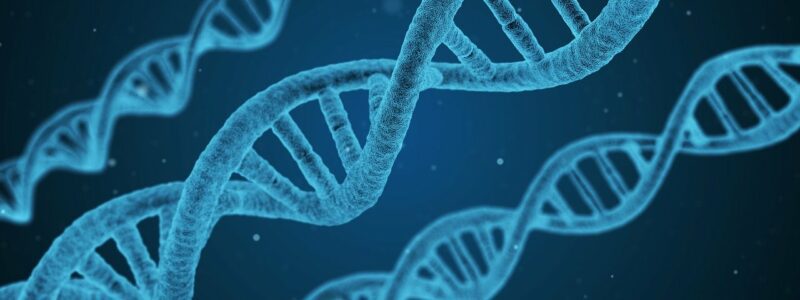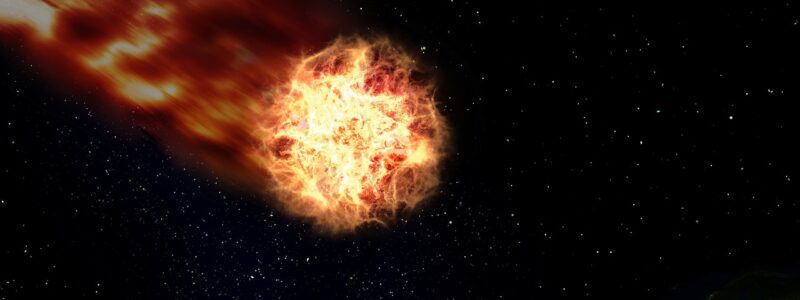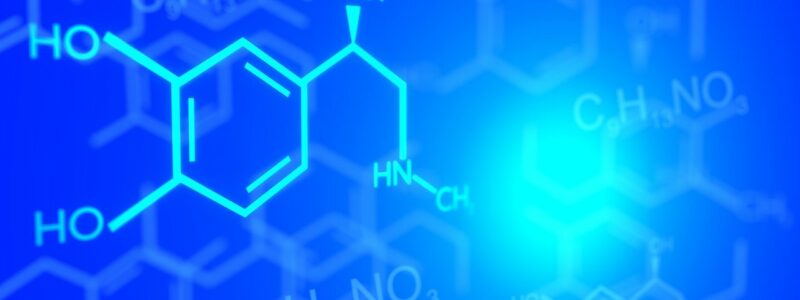Origin of Life with Cell Membranes
Origin of life with cell membranes occurred very early in life formation. Membranes mark the boundary between the cell and its environment. They are in bacterial cells to human cells, and are everywhere in nature.
The cell membrane separates what is inside the cell such as the nucleus, ribosomes, and chemistry from the outside world. Membranes are also very important in keeping harmful chemicals from the cell. They are also important in bringing in certain chemicals and nutrients into the cell.
Without these cell membranes, advanced life would be impossible
Membrane Structure
Cell membranes are more than just a simple barrier. They have structures in them that enable the quick transport of certain chemicals across the membrane. They have the ability to transport nutrients, chemicals and waste particles in and out of the cell.
There is an electrical charge across the membrane which can also improve the transport of certain ions and chemicals. This is especially important in contractile tissue such as the heart and muscle.
Many cell membranes have pores or holes across the membrane which are guarded by various proteins. These pores increase the transport of needed chemicals and nutrients. The proteins serve an important function as gatekeepers to these pores.
There are receptor proteins which receive signals from outside the cell and transport the signal to inside the cell. These proteins serve vital functions keeping the cell in contact with the outside world.
So the cell membrane is much more than just a barrier like a piece of plastic wrap. It is a complicated structure that serves many benefits to allow the cell to function efficiently.
Origin of Life with Cell Membranes
Scientists are interested in trying to determine how the first cell membranes might have come together on their own as they are needed for life. It is only about 2.5 to 4 nanometers thick. A nanometer is about one-billionth of a meter and so this is a very small structure.
There are two classes of molecules which for the structure of a cell membrane. These two classes of life molecules are proteins and lipids (or fat).
We will be spending most of the discussion on lipids as proteins were discussed elsewhere.
Lipids are a group of life molecules with a group of chemical compounds that do not dissolve in water. They include cholesterol, triglycerides, saturated and unsaturated fats, and various oils.
Phospholipids
Phospholipids are very important in the structure of a lipid cell membrane. It looks like a balloon on one end with two strings. The head “balloon” will dissolve in water while the strings will not. Soaps and detergents are similar molecules that have a water-soluble part, and another part that will not dissolve in water.
The phospholipid structure encourages the molecule to assemble in membranes when water is added. The water-loving head portion of the molecule will dissolve in the water while the strings will stick out.
The cell membrane consists of two sheets of phospholipids with the balloon structures on the inside and the strings sticking out.
Proteins
There are many proteins in the origin of life cell membrane. Proteins can serve many functions in the cell including structural, enzymatic, and receptors. In the cell membrane, the proteins help move other molecules across pores in the cell membrane. To do this, the proteins have a very specific structure.
The proteins are thought not to be tethered in the cell membrane. Instead, they move laterally as the need arises in the “fluid mosaic model.”
The movement of these proteins is also confined within certain domains of the entire cell membrane structure. It would not be good if proteins needed at the pore structures were unable to be found. Therefore, the proteins are not moving randomly but rather with a purposeful movement and controlled by other structures.
Evolutionary Explanations
Biologists have attempted to explain how the origin of life with cell membranes came to be. There is no doubt they were present on the early Earth. The big problem is to describe how the very complicated structure of the cell membrane could have evolved.
One possible way was discovered in the 1930s using iron or nickel elements with carbon monoxide and hydrogen. Scientists tried to induce membranes to form spontaneously using the Fisher-Tropsch model. This way produces both hydrophilic and hydrophobic areas on molecules forming fatty acids and fatty alcohols. These compounds can be used to make lipid membranes.
Other scientists criticize using this method because the reaction would be inhibited by other molecules likely present. The most common inhibitor is hydrogen sulfide present in gaseous vents.
Another reaction for induction of origin of life with cell membrane production using glycolaldehyde. This chemical was likely present on early Earth. It is a complicated reaction going through six biosynthetic processes. Other scientists point out that catalysts are required at every step. The need for catalysts would make practical application difficult.
Formation of Phospholipids in the Origin of Life with Cell Membranes
The fatty acids once formed maybe by one of the reactions noted above must combine with glycerol to make phospholipids. This type of reaction would require complete drying once formed as well as significant heat or about 150 degrees. Also, these reactions require significant concentrations of fatty acids and glycerol which would be unlikely.
Another problem is that both fatty acids and phosphates react with calcium and magnesium to form compounds that dissolve in water. This means they would not be available for the origin of life biochemistry.
Extraterrestrial Delivery
Due to all these difficulties and more, some scientists suggest delivery by extraterrestrial origin. The possibilities include comets, meteors, or delivery seeding by aliens.
Initial analysis of meteors such as the Murchison meteor suggested the presence of lipid molecules. However, a further evaluation showed that these lipids were the result of Earth contamination.
Other scientists from NASA, the SETI Institute, and the University of California suggest another method. They show that ultraviolet light irradiation of interstellar ice produces compounds including bilayer forming lipids. This interesting finding let to the proposal that ultraviolet radiation of comet heads may generate the lipids needed for life.
Origin of Life with Cell Membranes that were more Primitive
Scientists have proposed the earliest cell membranes were much more primitive than today. Compounds with hydrophilic and hydrophobic areas all form aggregates when added to water. Structures called micelles are formed from bilayers with a long side chain.
Some origin of life scientists suggests these micelles may have constituted the first cell membrane structures rather than lipids we have today.
Some molecules may form micelles under strict conditions, and also form bilayers under other conditions. The conditions require specific pH and temperature. Studies have shown that sometimes compounds form micelles and other times bilayers.
However, the practical applicability of these findings remains uncertain. It is difficult for an environment to have both the conditions needed for both types of lipids. Production of lipid layers and micelles requires a very specific pH. The layers become unstable at any deviation destroying the membrane structure.
These structures only form in water – not in saltwater. Since the primitive oceans were saltier than today, it is difficult to know how these lipid layers might form. It is thought primitive oceans were 50 to 100% more salty than present conditions.
Reproduction of Origin of Life Cell Membranes
The next big step would be the encapsulation by the cell membrane of the structures needed for life. However, studies show that bilayer bubbles or vesicles can trap DNA during drying and then water addition. Of course, the next step would be for the DNA and the cell membrane to spontaneously duplicate or reproduce.
It is necessary not only for the cell membrane to duplicate. Everything within the cell membrane must also duplicate.
So far, no studies have been performed to show the long term stability of lipid bilayers. They require strict pH, temperature, and no salinity in the water they need, absence of certain elements and the presence of others.
Finally, these bilayer membranes have the functionality to reproduce The hydration and drying cycles noted above to incorporate DNA into cells would likely destroy the lipid bilayer.
Laboratory Formation of Cell Membranes
The formation of lipid bilayers in the laboratory is relatively easy under strict conditions. Additionally, the experimenter will use off the shelf chemicals such as phosphatidylethanolamines (PE) and phosphatidylglycerol (PG). These are the principle phospholipids present in bacterial cell membranes.
However, it is unclear how PE and PG could be present on old Earth in order to form bacteria and then other life. Also, these phospholipids interfere with each other’s ability to form bilayers and instead for non-bilayer aggregates.
Phospholipids can stack together in other ways than in simple bilayers that are seen in cell membranes. Instead, they can stack into sheets (multilaminar) or spherical structures like an onion. These later formations have no use in the formation of life.
Adjustment of Cell Membrane Structure to Temperature
ONe of the most amazing things about life is how it adjusts to environmental conditions. For example, Norman Gershfeld from the National Institutes of Health demonstrated how the bacterium adjusts.
He extracted the lipids from various organisms and analyzed the lipid composition to determine stability at varying temperatures.
E. coli is a bacteria that is in the presence of fecal matter and can often cause urinary tract infections. Somehow, the bacteria is able to adjust its cell membrane phospholipid composition to maintain a single bilayer phase.
Red blood cells in humans have a cell membrane that is a bilayer like all other cell membranes. At high temperatures, the red blood cell membrane can become unstable with the usual stable bilayer developing multiple single layers instead. This causes a rupture of the cells in a process called hemolysis.
Gershfeld shows that all cell membranes are structures which are very sensitive to the environment. They depend on precise temperature, pH, ionic composition, environmental chemicals, etc.
It seems highly unlikely that these exacting requirements could be present on the early Earth. Furthermore, if such a cell membrane could be produced in the vastness of Earth’s early oceans, any minute local change would spell disaster.
Conclusion
The origin of life with cell membranes is a particularly difficult problem to solve. It resembles those problems associated with the production of DNA and protein structures. Chemists can induce amino acids to form short chains spontaneously. However, the precise structure of a protein with hundreds of amino acids is extraordinarily difficult to produce.
Similarly, phospholipids can be induced to aggregate in a bilayer structure, but only certain phospholipids are important. Also, environmental restrictions have to be very severe for any structure to survive.
There is no good explanation of how these structures could then have duplicated and spread throughout the world. Early attempts at explanation vastly underestimated the complexity of the cell membrane.
Laboratories are not able to make cell membranes like those surrounding bacteria.
The bigger point is how the production of certain micelles and bilayer phospholipid cell membranes could possibly have occurred in the hostile environment of the early earth and then produce the life we around us today.
The difficulty of making functional membranes is further complicated by difficulty making protein structures and chiral molecular solutions.
References
Rana, Fazale; et al, Origins of Life, RTB Press, 2014




